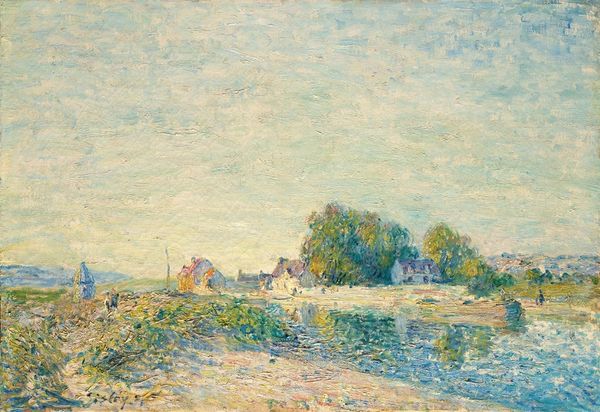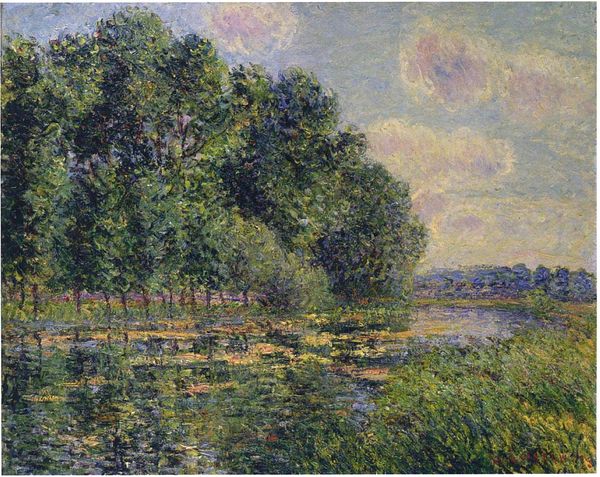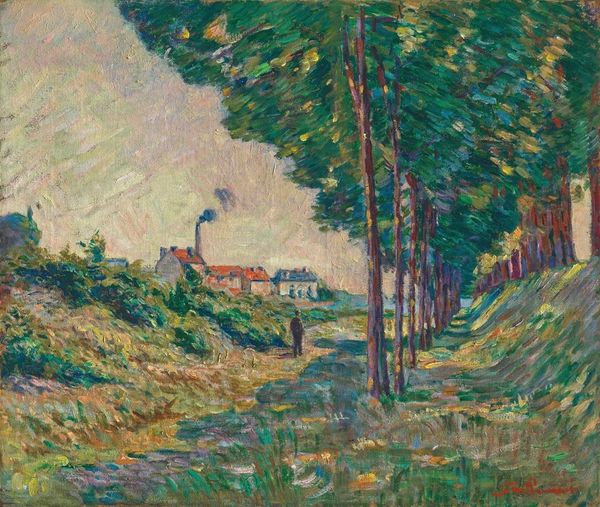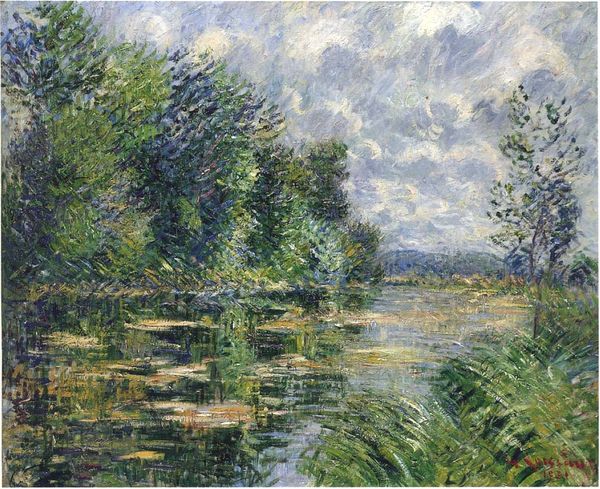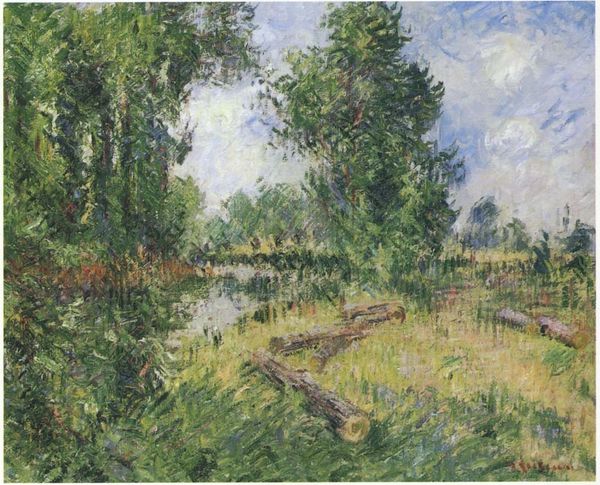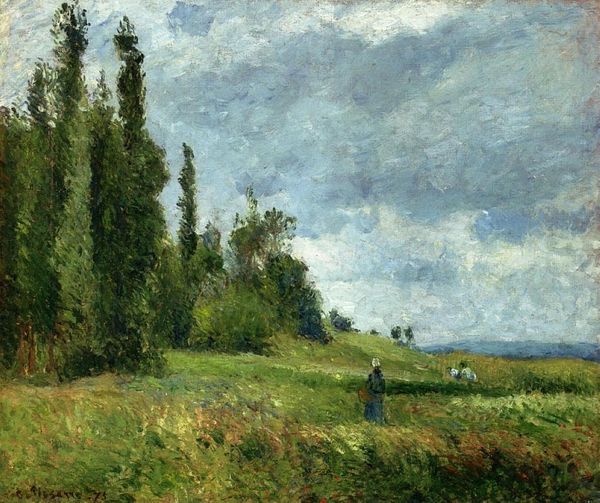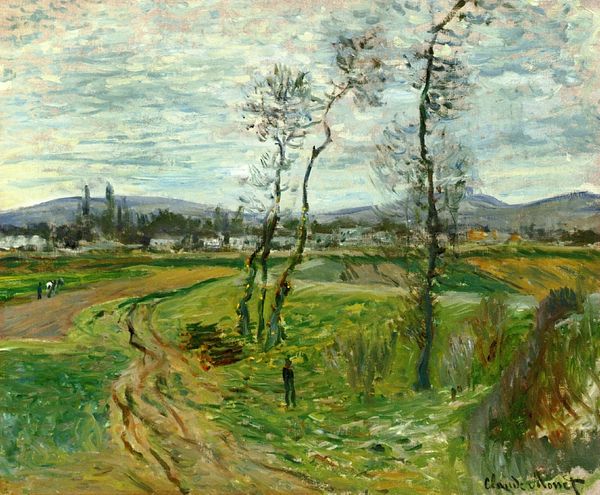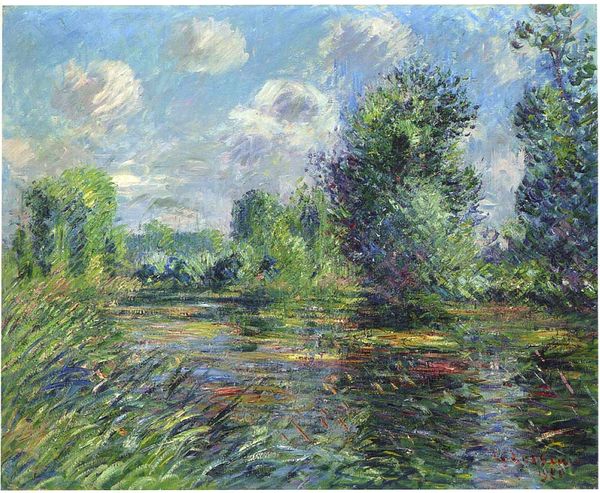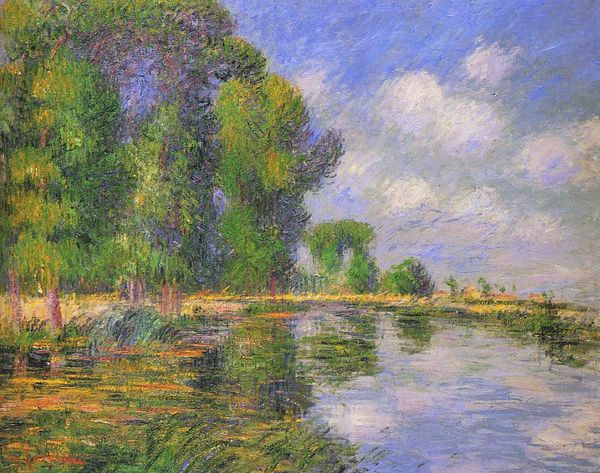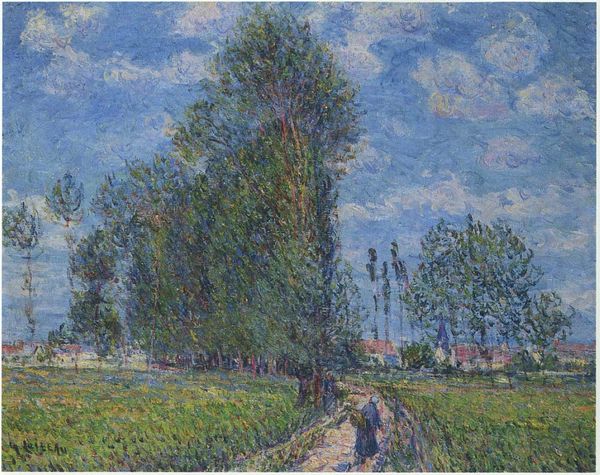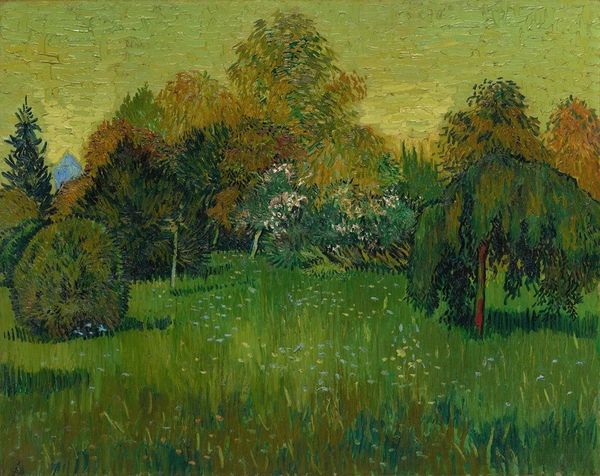
painting, plein-air, oil-paint
#
tree
#
painting
#
impressionism
#
plein-air
#
oil-paint
#
landscape
#
river
#
impressionist landscape
#
nature
#
forest
#
natural-landscape
#
nature
Copyright: Public domain
Curator: Let's delve into Gustave Loiseau's "The Belon River," an oil painting rendered in the Impressionist style. It is interesting to look at how this work exists as an artistic statement and social commentary. Editor: The brushstrokes are very loose, and the colors blend almost seamlessly, especially in the water. What do you see in this piece beyond just a pretty landscape? Curator: Well, beyond the aesthetic, consider the historical moment. Impressionism, emerging in a rapidly industrializing France, provided artists avenues to represent new leisure spaces afforded by rising economies, such as bourgeois boating culture. Do you notice how nature is portrayed, not as a wild, untamed entity, but almost domestic and neat? Editor: I see what you mean, like even the foliage around the river seems curated, in a way, with clear delineation, almost like garden. Curator: Precisely. Loiseau's landscapes subtly question who has access to this beauty and the socio-economic power dynamics embedded within landscape paintings of that period. It urges viewers to consider questions about land use, resource distribution, and the commodification of nature as an expression of privilege. It prompts reflection upon what landscapes were included—and importantly, which were excluded—and why. Editor: I hadn’t thought about it like that before, as something more than just aesthetic. It changes how I view the entire Impressionist movement, making it a critical point to spark a wider conversation. Curator: Indeed. Understanding art as embedded within a broader societal narrative provides vital insight.
Comments
No comments
Be the first to comment and join the conversation on the ultimate creative platform.

